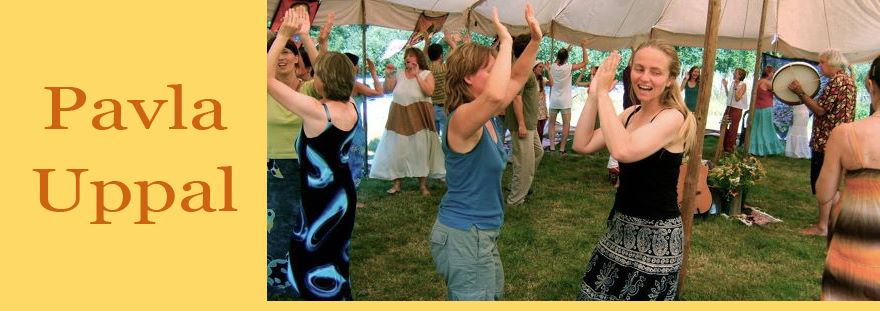The week-long, intensive workshop was organized and run by Jumblies Theatre http://www.jumbliestheatre.org The introduction to the company (from their web site) states: "Jumblies makes art in everyday and unexpected places with, for and about the people and stories found there, thus creating transient utopias and far-reaching ripples."
Jumblies for me embodies the practice of community-engaged/community-based theatre arts and I learned a lot while creating art, observing, and discussing. There were several points of entry for me into what I learned that week:
- It was inspiring to work with and under the guidance of Ruth Howard, who has been immersed in community arts for many years and has experiences that encompass many possibilities.

- Jumblies aesthetics are vastly inspired by visual arts and design. I got to create small pieces of visual arts. Visual arts activities do have different powers to bring people together or to offer solitary activity than theatre and drama do. Visual arts also produce immediate result (tangible pieces) in the form of decorated objects, sketches, paintings, collages, etc. It brings to mind the relationship between process and product in my work, which I am constantly pondering. The process documentation has been a challenge for me. Now, after getting the inspiration from visual arts, I can see the possibilities that the integration into my practice may bring. By creating something tangible at each stage of the process, the record keeping becomes much easier and is embedded in the creative process. The creating of the visual arts/installation pieces is thematically linked to the exploration that takes place. I am very excited about the the invitation I was given to open the door into my practice to visual arts.
- I started to think in very concrete terms how to bring more of visual arts and other media and disciplines into my work and what that integration may bring. I not only see an advantage of this integration in terms of thematic investigation, grant writing, and legacy, but also in terms of practicalities of group facilitation. For example, one of the issues that drama/theatre arts usually has to tackle is attendance; people showing up late or very sporadically. Most drama activities/games and exercises require the whole group to be in the room in order to start and/or be meaningful - theatre happens in the present moment. However, visual art-making can be structured as an on-going process, which starts as an individual activity (as people show up at the door) and gradually encompasses everyone (when everyone finally arrives). That way, the time period is creatively spent and is not perceived as just a time for waiting for others.


- Grant writing. On Monday morning, we sat in a cozy team room of the Montgomery Inn in Etobicoke (Islington and Dundas West) and grouped around several tables for mock jury. We were assessing three grant proposals for community arts projects. Loree Lawrence from the Ontario Arts Council and Andrew Suri from the Toronto Arts Council were present as the directors. They gave us an overview of what a real jury would look like and we adhered to the procedures as closely as we could. The morning was intense - having to rate the proposals and allocate limited financial funds was difficult; especially because the three proposals were all wonderful. What was the biggest gain for me that morning was to find out that the Councils officers and as well as the jurors are artists. Thus, when thinking of writing my own proposal, I now can picture my audience and it feel more encouraging to engage in the conversation with them. Also, Loree shared a personal experience with us about her grant application, which shed some additional light on the necessity of clear articulation of the goals of the projects and contingency plans. I am actually looking forward to writing my grant proposal in the spring!!
- Participants were also a huge part of my learning - they were all practitioners in various stages of their careers and from different artistic disciplines/backgrounds. I made great connections with people and can't wait to start engaging with talent and creative mind.
- During the Arts for All Essentials workshop, what I also enjoyed and learned from was that the Jumblies' mission statement of inclusiveness transpired from the first moment when I walked into the door to the last good byes, and from each and every activity and interaction. In my view, it was the best legacy-building workshop I attended in many years as it radiated the contagious energy of love for people, care, creativity, and artistic expertise, which springs from the moments of sharing with people (community), and which I, as a practitioner, will now strive to carry on in my work.
Ruth Howard, Leah Houston, Michael Burtt, Liz Rucker, Keith McNair, Sean Frey, Beth, Lisa Marie DiLiberto.
I continue to be involved in MabelleArts preparation for the mid-winter parade. http://mabellearts.ca/
I look forward to the new creative encounters with Jumblies and their ventures in 2011.

No comments:
Post a Comment